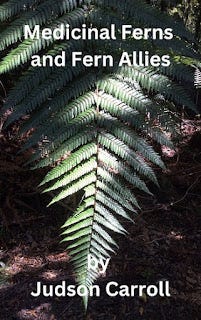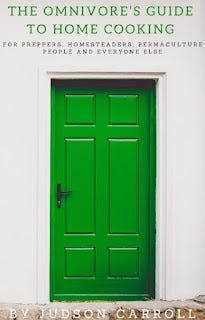Twenty-three varieties of Sorbus have been found useful in Herbal Medicine: Sorbus alnifolia - Korean Mountain Ash, Sorbus americana - American Mountain Ash, Sorbus aria – Whitebeam, Sorbus aucuparia - Mountain Ash, Sorbus austriaca, Sorbus commixta, Sorbus decora - Showy Mountain Ash, Sorbus devoniensis - French Hales, Sorbus domestica - Service Tree, Sorbus gracilis, Sorbus hybrida - Swedish Service Tree, Sorbus intermedia - Swedish Whitebeam, Sorbus japonica, Sorbus lanata, Sorbus latifolia - French Hales, Sorbus mougeotii, Sorbus pohuashanensis, Sorbus sambucifolia, Sorbus scopulina - Western Mountain Ash Synonym: Sorbus sambucifolia, Sorbus sitchensis - Sitka Mountain Ash, Sorbus thibetica, Sorbus torminalis - Wild Service Tree, Sorbus vestita
The only variety native to my region is the American Mountain Ash or American Rowan. Although it is rarely seen around my home, this large member of the Rose Family grows in many parts of the Appalachian Mountains, and was once an important food source…. Now, mostly forgotten.
Dioscorides referred to Sorbus as “Uva”:
Uva which are a yellowish colour and not yet ripe, first cut apart and dried in the sun, are astringent for the bowels, ground up and eaten as a meal. It is eaten instead of polenta, and a decoction of them (taken as a drink) does the same.
For Gerard, it was the Service Tree:
A. Service berries are cold and binding, and much more when they be hard, than when they are mild and soft: in some places they are quickly soft, either hanged in a place which is not altogether cold, or laid in hay or chaff: those services are eaten when the belly is too soluble, for they stay the same; and if they yield any nourishment at all, the same is very little, gross, and cold; and therefore it is not expedient to eat of these or other like fruits, nor to use them otherwise than in medicines.
B. These do stay all manner of fluxes of the belly, and likewise the bloody flux; as also vomiting: they stanch bleeding if they be cut and dried in the sun before they be ripe, and so reserved for use: these we may use divers ways according to the manner of the grief and grieved part.
Culpepper also wrote of the Service Tree:
This grows to be a pretty large tree, whose branches are cloathed with winged leaves, somewhat like those of the ash-tree, consisting of seven or nine serrated pinnæ, each leaf terminating in an odd one. It has several clusters of five-leaved white flowers which are followed by fruit of the shape and bigness of a small pear, growing several together on foot-stalks and inch long; they are of a greenish colour, with a mixture of red, as they have been more or less exposed to the sun; of a rough, austere, choaky taste; but when ripe or mellow, sweet and pleasant.
It is under Saturn, and reckoned to be very restringent and useful for all kinds of fluxes; but when ripe, not altogether so binding. This fruit is seldom or never to be met with in our markets; and therefore, for a succedaneum, we use the following:
MANURED SERVICE TREE - The common service-tree will, in good ground, grow considerably tall, having a whitish bark, and leaves that differ from those of the former, in not being winged, but somewhat like the maple, though larger and longer, being cut into seven sharp-pointed and serrated segments, the two next the stalk being cut in deepest, of a pale green above, and whitish underneath. The flowers grow in clusters like the former, of a yellowish white colour; and the fruit is set in the same manner on long footstalks, more than as big again as the common haws; they are likewise umbilicated at the top, of a harsh restringent taste when green, but when mellowed, sweet and pleasant, having a stony substance in the middle, including two seeds.
Place: It grows frequently in woods and thickets, and flowers with the former, the fruit being ripe as late.
Government and virtues. It is under the dominion of Saturn. The fruit, as I said, is used for the former, being of the same nature, or rather more restringent and binding, being good for all kinds of fluxes, either of blood or homours; when ripe, it is pleasant and grateful to the stomach, promoting digestion, and preventing the too hasty passage of the food out of the bowels; and is commended in fevers attended with a diarrhœa. If they be dried before they be mellow, and kept all teh year, they may be used in decoctions for the same purpose, either to drink, or to bathe the parts requiring it; and are profitably used in that manner to stay the bleeding of wounds, and of the mouth or nose, to be applied to the forehead, and nape of the neck.
Brother Aloysius wrote of Mountain Ash:
Rowan berries are astringent. The sap was formerly recommended for vomiting and heavy bleeding.
King's American Dispensatory, 1898 tells us:
Action, Medical Uses, and Dosage.—The ripe fruit of sorbus, when infused with water, furnishes an acidulous and astringent gargle for acute diseases of the pharyngeal vault and tonsils, with excessive secretion. The bark and the unripe fruit are employed in infusion, or decoction in scurvy and diarrhoea, and topically to relaxations of the anal or vaginal walls and throat, all with profuse secretion. The very astringent qualities of sorbus render it a good agent for poultices when one of such a character is desired.
Related Species.—Pyrus Americana, De Candolle (Sorbus Americana, Marshall), and the Pyrus sambucifolia, Chamisso et Schlechtendal (Sorbus sambucifolia, Roemer), are two indigenous species resembling the European tree but bearing smaller fruits. Both are known as American mountain ash.
Crataegus.—The bark, fruit, and leaves of this genus of plants are sometimes employed as astringents and tonics. (See also Crataegus Oxyacantha.)
Pyrus coronaria, Linné, Crab apple, Pyrus arbutifolia, Linné filius, Chokeberry. Both of these species have the properties of sorbus.
Peterson Field Guides Eastern and Central Medicinal Plants tells us:
American Indians used tea from ripe fruit for scurvy, worms, tea made from inner bark or buds for colds, debility, boils, diarrhea, tonsillitis; also as a blood purifier, appetite stimulant; Astringent, tonic.
This article is an excerpt from The Medicinal Trees of the American South, An Herbalist's Guide: by Judson Carroll
His New book is:
Read About:
Medicinal Ferns and Fern Allies, an Herbalist's Guide
Available for purchase on Amazon:
https://www.amazon.com/dp/B0BMSZSJPS
His new cookbook is:
Read About The Omnivore’s Guide to Home Cooking for Preppers, Homesteaders, Permaculture People and Everyone Else"
https://southernappalachianherbs.blogspot.com/2022/10/the-omnivores-guide-to-home-cooking-for.html
Available for purchase on Amazon:
https://www.amazon.com/dp/B0BGKX37Q2
His other works include:
Medicinal Shrubs and Woody Vines of The American Southeast An Herbalist's Guide
Read about Medicinal Shrubs and Woody Vines of The American Southeast An Herbalist's Guide: https://southernappalachianherbs.blogspot.com/2022/06/medicinal-shrubs-and-woody-vines-of.html
Available for purchase on Amazon: https://www.amazon.com/dp/B0B2T4Y5L6
Growing Your Survival Herb Garden for Preppers, Homesteaders and Everyone Else
Read About Growing Your Survival Herb Garden for Preppers, Homesteaders and Everyone Else: http://southernappalachianherbs.blogspot.com/2022/04/growing-your-survival-herb-garden-for.html
Available for purchase on Amazon: https://www.amazon.com/dp/B09X4LYV9R
The Encyclopedia of Bitter Medicinal Herbs:
southernappalachianherbs.blogspot.com/2022/03/the-encyclopedia-of-bitter-medicina.html
Available for purchase on Amazon:
https://www.amazon.com/dp/B0B5MYJ35R
Christian Medicine, History and Practice:
https://southernappalachianherbs.blogspot.com/2022/01/christian-herbal-medicine-history-and.html
Available for purchase on Amazon: www.amazon.com/dp/B09P7RNCTB
Herbal Medicine for Preppers, Homesteaders and Permaculture People
southernappalachianherbs.blogspot.com/2021/10/herbal-medicine-for-preppers.html
Also available on Amazon: https://www.amazon.com/dp/B09HMWXL25
Look Up: The Medicinal Trees of the American South, An Herbalist's Guide
http:///www.amazon.com/dp/1005082936
The Herbs and Weeds of Fr. Johannes Künzle:
https://southernappalachianherbs.blogspot.com/2021/05/announcing-new-book-herbs-and-weeds-of.html
Author: Judson Carroll. Judson Carroll is an Herbalist from the Blue Ridge Mountains of North Carolina.
His weekly articles may be read at judsoncarroll.com
His weekly podcast may be heard at: www.spreaker.com/show/southern-appalachian-herbs
He offers free, weekly herb classes: https://rumble.com/c/c-618325
Disclaimer
The information on this site is not intended to diagnose or treat any disease or condition. Nothing on this site has been evaluated or approved by the FDA. I am not a doctor. The US government does not recognize the practice of herbal medicine and their is no governing body regulating herbalists. Therefore, I'm just a guy who studies herbs. I am not offering any advice. I won't even claim that anything I write is accurate or true! I can tell you what herbs have "traditionally been used for." I can tell you my own experience and if I believe an herb helped me. I cannot, nor would I tell you to do the same. If you use any herb I, or anyone else, mentions you are treating yourself. You take full responsibility for your health. Humans are individuals and no two are identical. What works for me may not work for you. You may have an allergy, sensitivity or underlying condition that no one else shares and you don't even know about. Be careful with your health. By continuing to read my blog you agree to be responsible for yourself, do your own research, make your own choices and not to blame me for anything, ever.






You can't beat Storey's Guide on raising ducks. Was that cookbook James Beard's Fireside Cookbook?
In addition to the treasure of info you share with us, I LOVE the drawn images you use.